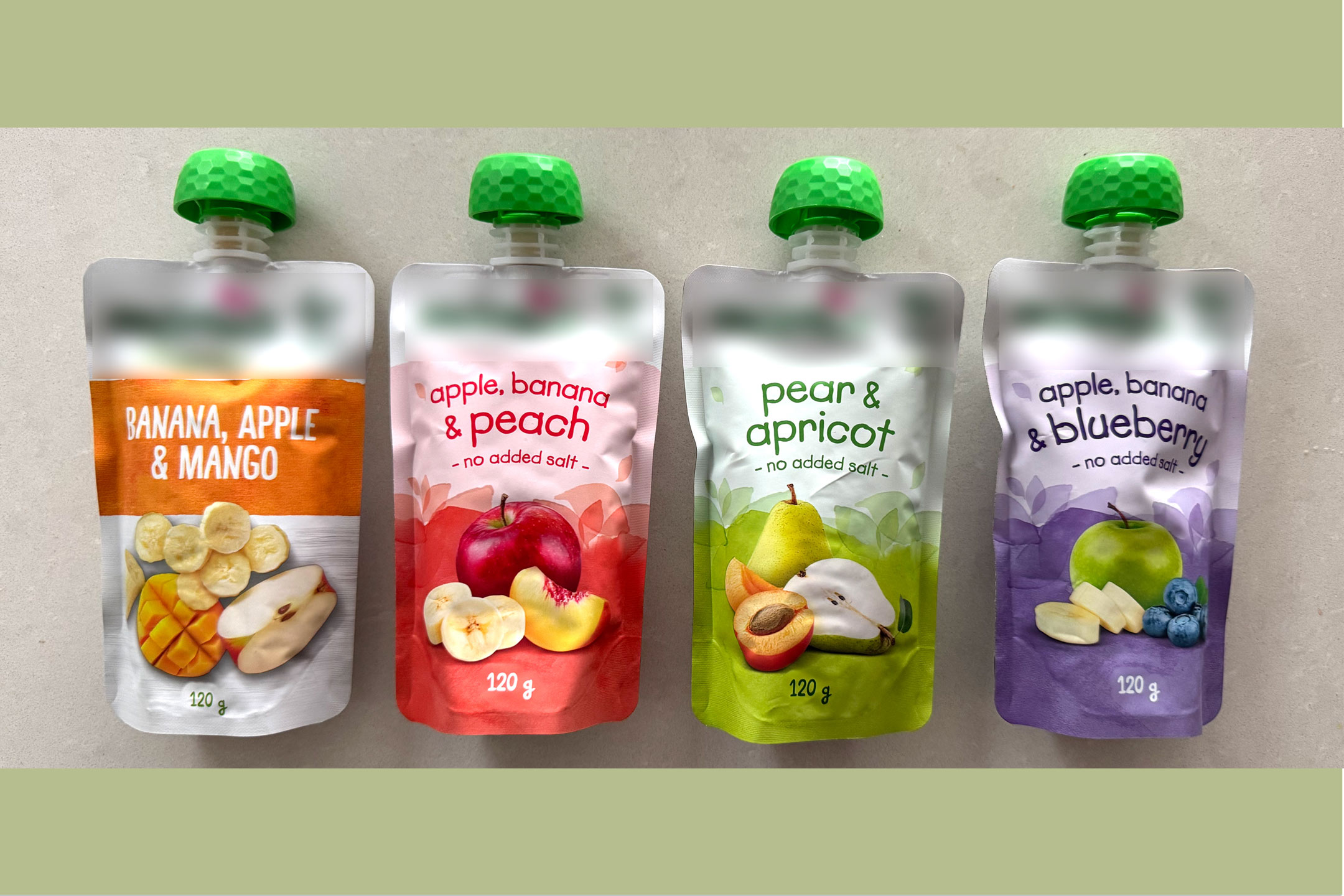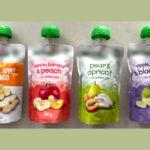
07 Aug Baby Food Pouches Under the Microscope: Sugar, Texture & Tooth Risks
Introducing solid food is a key milestone for babies, usually around six months of age, writes WA paediatric dentist Dr Anna Buckeridge
Solid Starts
The texture of food typically progresses from purees to mashed, then minced and chopped foods by eight months, and finger foods by 12 months.
Taste preferences and feeding habits develop early. Australian guidelines advise against adding sugar or salt to baby food in the first year. Feeding methods vary—from spoon-feeding to soft lumps or finger-sized pieces for self-feeding. Small amounts of water can be introduced in open cups instead of cups with straws or spouts.
Squeeze Pouches: Popular but Problematic
Squeeze pouches — plastic sachets with mushroom-shaped caps — dominate the baby food market in Australia. Their key appeal lies in convenience. They’re portable, have long shelf lives, and can be consumed straight from the pack — a plus for busy families and retailers alike.
But there are downsides worth considering.
High Sugar Content
Australian assessments show squeeze pouches, especially fruit- and dairy-based ones, often contain high sugar levels. While many are marketed as having “no added sugar,” this can be misleading. The current food standard allows products with sweeteners like juice concentrates, fruit puree or dried fruit to still claim “no added sugar.” This confuses parents and disguises how sugary these products truly are.
Australia lacks a standard definition for “free sugar,” so the best tip is to check total sugar per 100g on the label. Aim for products with less than 10g per 100g, in line with World Health Organisation guidelines recommending no more than 10% of daily energy from sugar (or 5% ideally).
Children naturally prefer sweet flavours, and manufacturers know that sweeter products are more likely to be purchased. As a result, the majority of pouches contain sweet, rather than savoury, ingredients.
Acid and Tooth Erosion
Citric acid is often added to enhance taste and preserve freshness. However, it can erode tooth enamel by binding to calcium, a key component of teeth.
Reconstituted Ingredients
Many pouches contain reconstituted fruit or vegetable concentrates. This not only increases hidden sugars but raises questions about whether their nutritional value matches fresh produce, since the ingredients undergo multiple rounds of processing.
How the Food Is Delivered Matters
Swallowing is a complex process involving chewing, tongue movement, and coordinated swallowing reflexes. Only about half of pouch products recommend spoon-feeding. Many are consumed by sucking from the spout — bypassing essential oral-motor development.
For instance, eating yoghurt from a pouch doesn’t offer the same practice in using fingers or utensils, or in forming a ball of food in the mouth before swallowing. These are important developmental milestones.
Packaging Concerns
Pouches are made of soft plastics, which aren’t recyclable. Some even suggest warming food in the packet, but heating soft plastic is best avoided as chemicals like bisphenol A and phthalates can leach into food.
Also, serving sizes are typically fixed at 120g regardless of the age group, leading to overfeeding or food waste.
Puree Texture Limits Chewing Skills
Most pouches have a smooth puree texture, even those marketed for older babies. This limits children’s exposure to lumpier foods needed for learning to chew and for tongue movement. Only a small number of products aimed at babies aged 8+ months offer suitable textures.
Labelling Mismatches
Front-of-pack labels may feature proteins or vegetables, but closer inspection often reveals that the main ingredients are fruit-based. “No added sugar” claims can also obscure the presence of high sugar levels from processed fruit.
Recommendations for Parents
Squeeze pouches are processed convenience foods and shouldn’t dominate a child’s diet. If you use them, consider these three tips:
- Read the back label. Choose products with less than 10g of sugar per 100g. Ignore “no added sugar” claims.
- Serve with a spoon. Always dispense into a bowl before heating or feeding.
- Look for substance. Prioritise products with higher vegetable or protein content.
Dr Anna Buckeridge is a specialist paediatric dentist who obtained her dental degree and completed her postgraduate training in paediatric dentistry at The University of Western Australia. She is also a member of the Royal Australasian College of Dental Surgeons. Anna has been the vice president for the Western Australian branch of the Australia and New Zealand Society of Paediatric Dentistry.



